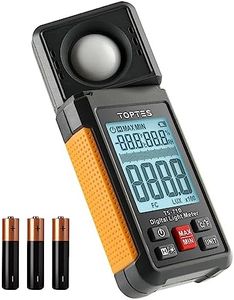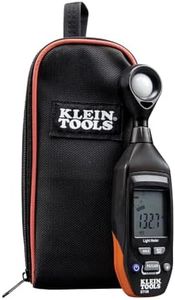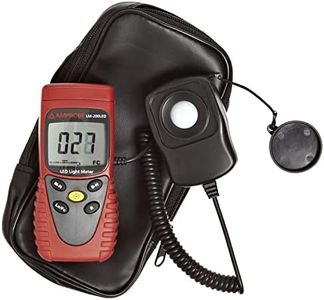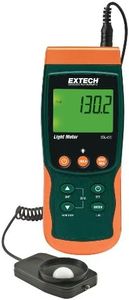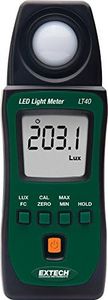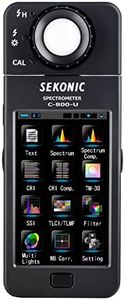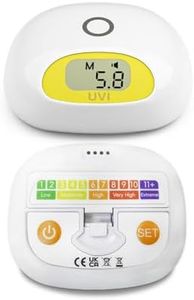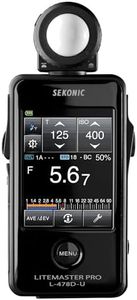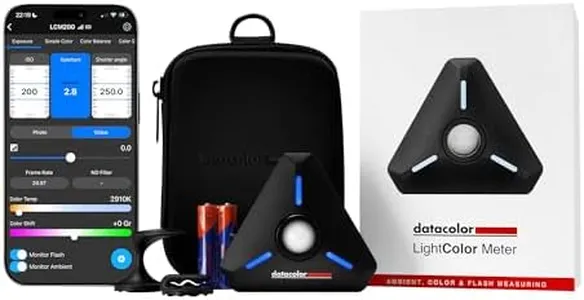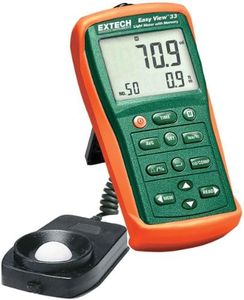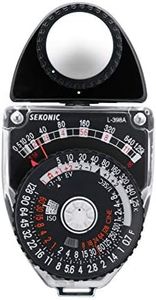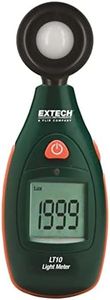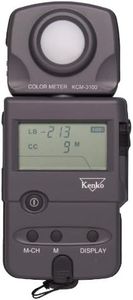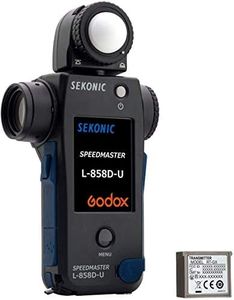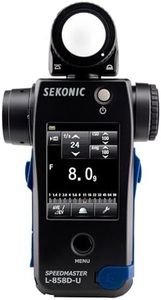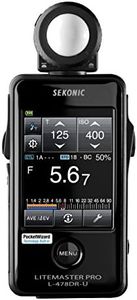10 Best Light Meters 2025 in the United States
Our technology thoroughly searches through the online shopping world, reviewing hundreds of sites. We then process and analyze this information, updating in real-time to bring you the latest top-rated products. This way, you always get the best and most current options available.

Our Top Picks
Winner
Klein Tools ET130 Digital Light Meter
Most important from
332 reviews
The Klein Tools ET130 Digital Light Meter is designed for those who need an efficient way to measure light levels, making it suitable for electricians, HVAC professionals, and anyone involved in lighting analysis. One of its strong points is its user-friendly interface, which allows users to operate it without complicated setups. The ability to measure light in both Foot Candles and Lux provides a comprehensive understanding of lighting conditions, catering to different preferences and requirements.
This meter offers both auto and manual range settings, with a maximum range of 4000 FC and 40,000 Lux. This flexibility is a significant advantage for various applications, from residential to commercial spaces. The backlit LCD display and 40-segment bar graph make it easy to read measurements, even in dim lighting, enhancing usability on job sites.
Conveniently, the ET130 includes features such as data hold and Max/Min readings, which can assist in detailed analysis. The auto power-off feature helps conserve battery life, which is beneficial for users who may forget to switch it off after use. Plus, it comes with a carrying pouch and a 9V battery, enabling immediate use and portability.
Most important from
332 reviews
Amprobe LM-200 LED Light Meter
Most important from
66 reviews
The Amprobe LM-200 LED Light Meter is a digital device designed to measure visible light from various sources, including fluorescent and incandescent lights. It offers a wide measuring range, capable of capturing up to 200,000 lumens per square meter (lux) or 20,000 footcandles (fc), making it versatile for both small and large-scale lighting assessments. One of its strengths is the dual-scale measurement, which enhances its utility across different lighting conditions. The device also includes useful features like manual ranging and a data hold function that can freeze readings, which can be particularly handy when analyzing fluctuating light conditions. An additional cosine correction feature ensures more accurate results by adjusting for angled light.
In terms of portability, the LM-200 is compact and lightweight, weighing only 0.18 ounces, and includes a 1.5-meter wire for flexible sensor positioning, which can be beneficial for hard-to-reach areas. The protective sensor cap helps prevent damage during transportation, further adding to its portability. Power is supplied by a standard 9V battery, making it easy to maintain and replace as needed.
However, the meter uses a manual ranging system, which may require some getting used to, especially for users accustomed to automatic devices. While the data hold and maximum recording features are useful, the manual nature of some functions might slow down workflow for users who need rapid readings.
The Amprobe LM-200 is well-suited for professionals and enthusiasts who require a reliable, portable light meter with a broad range and decent accuracy. Its design and features cater well to a variety of lighting conditions, though users should be comfortable with manual settings to fully leverage its capabilities.
Most important from
66 reviews
Extech SDL400 Light Meter SD Logger
Most important from
5 reviews
The Extech SDL400 Light Meter SD Logger is designed for those needing reliable light measurement, making it a suitable choice for professionals in photography, horticulture, and industrial settings. One of its standout features is the wide measuring range, capable of measuring up to 10,000 foot-candles or 100,000 Lux, which is beneficial for a variety of lighting conditions. Additionally, the light meter utilizes a precision silicon photo diode that ensures accurate readings, complemented by cosine and color-corrected measurement capabilities, enhancing its reliability.
The datalogging feature allows users to timestamp and store readings on an SD card in an Excel format, making it easy to transfer data to a computer for analysis. This can be particularly useful for projects that require extensive documentation of light levels over time. The inclusion of an offset adjustment feature also allows for relative measurements, adding another layer of convenience for users.
While the SDL400 requires six AA batteries, which might be an inconvenience for some users who prefer rechargeable options, it has a user-friendly design. However, those unfamiliar with similar devices might still find it takes some time to learn all its features. As it was first available in 2012, while it remains effective, newer models may offer advanced technology and features that could be worth considering for some users. This light meter is a solid option for anyone needing accurate and versatile light measurements with the added benefits of data logging.
Most important from
5 reviews
Buying Guide for the Best Light Meters
Choosing the right light meter can significantly enhance your photography or cinematography by ensuring accurate exposure settings. A light meter measures the amount of light in a scene, helping you to determine the optimal exposure settings for your camera. When selecting a light meter, it's important to consider various specifications to find the best fit for your needs. Here are some key specs to consider and how to navigate them.FAQ
Most Popular Categories Right Now
